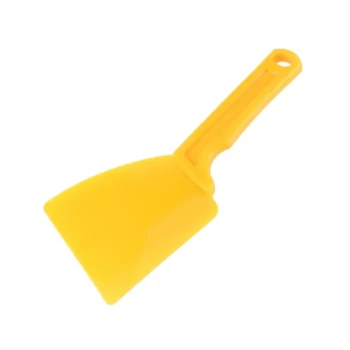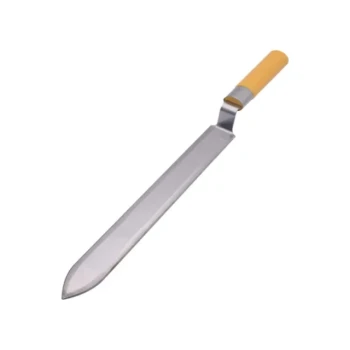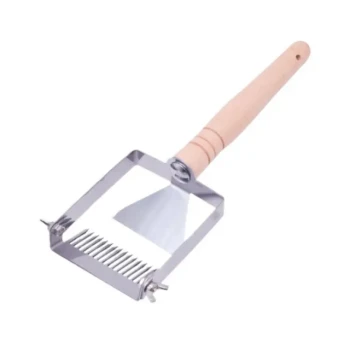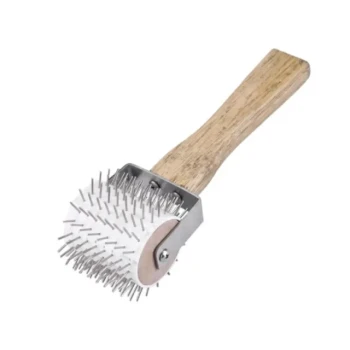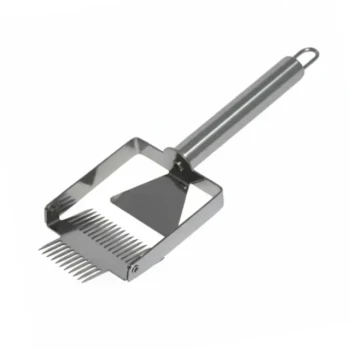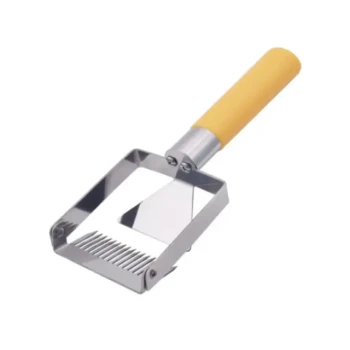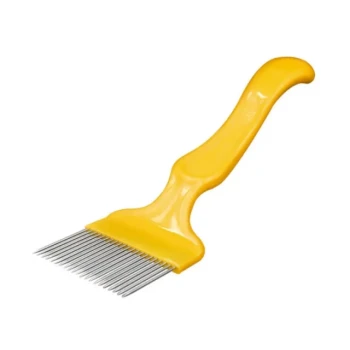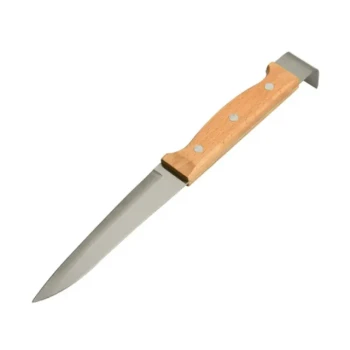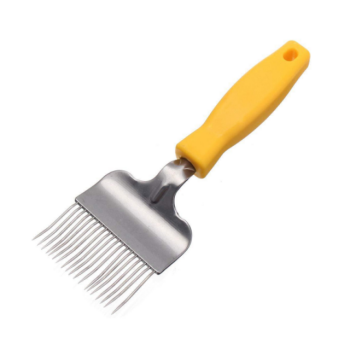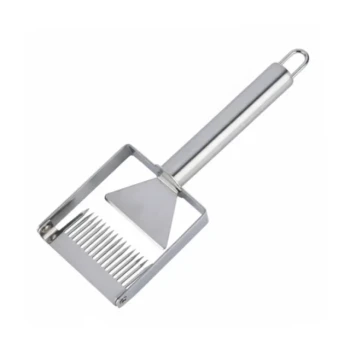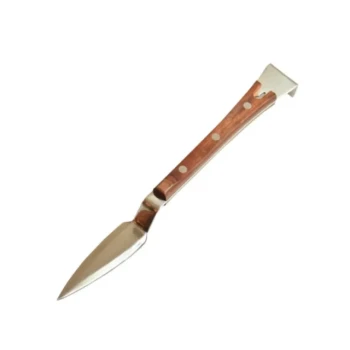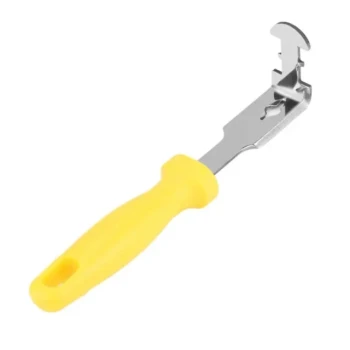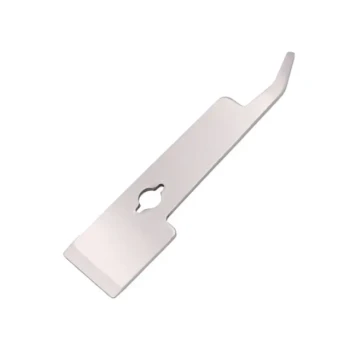At its core, a capping scratcher is a simple, fork-like tool used in beekeeping to pierce and remove the wax cappings that seal honey-filled cells on a frame. Its primary role is to ensure every cell is open before the frame is placed in a honey extractor, making it an essential final check after using a primary uncapping knife.
The capping scratcher is the beekeeper's tool for precision and thoroughness. While an electric knife offers speed, the scratcher guarantees that no honey is left behind, especially in the uneven, hard-to-reach areas of a honeycomb.
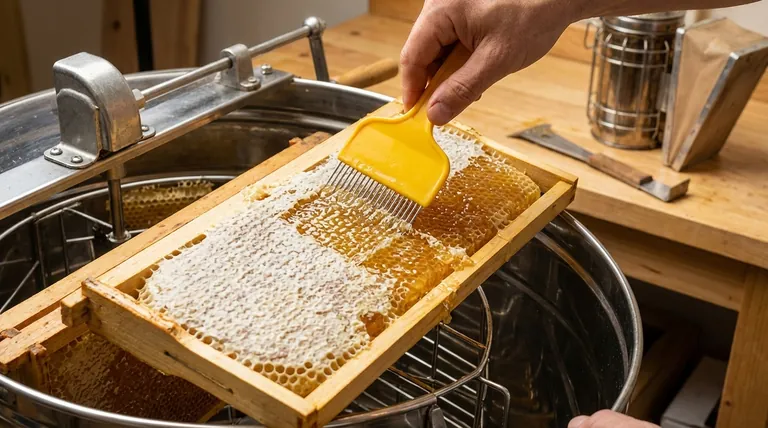
The Role of the Capping Scratcher in Extraction
To harvest honey, you must first remove the protective wax layer that bees build over filled honey cells. The capping scratcher is a critical instrument in this uncapping process, serving two distinct functions.
Its Primary Use: The Cleanup Tool
For most beekeepers, especially those processing a moderate to large number of frames, an electric uncapping knife or a cold knife is the primary tool. These tools quickly slice off the top layer of wax cappings in a single sheet.
However, honeycombs are rarely perfectly flat. Knives often miss the lower, recessed areas of the comb, leaving many honey cells sealed. This is where the capping scratcher excels as a secondary, cleanup tool. Its sharp tines can reach into these dips and valleys to pierce the remaining cappings.
As a Standalone Uncapping Method
For beekeepers with only a few hives or frames to process, a capping scratcher can be used as the sole uncapping tool. This method involves methodically raking the tines across the entire frame surface to open every cell.
While effective, using only a scratcher is significantly more time-consuming than using an uncapping knife.
Understanding the Trade-offs
Choosing your uncapping tool involves a balance between speed, cost, and the tidiness of the final product. The capping scratcher has clear advantages and disadvantages.
Speed vs. Thoroughness
An electric knife is built for speed, allowing a beekeeper to uncap a frame in seconds. A capping scratcher is a tool of patience and precision, ensuring every cell is accounted for.
The most efficient workflow combines both: the knife for bulk removal and the scratcher for detailed finishing.
The "Mess Factor"
A sharp uncapping knife removes the cappings in a relatively clean, single sheet. This makes it easier to separate the wax from the honey later.
A capping scratcher, by contrast, shreds and punctures the cappings. This creates many more small wax particles that get mixed in with the honey, requiring more thorough straining and filtering after extraction.
Cost and Simplicity
The capping scratcher is one of the most inexpensive tools in a beekeeper's kit. It requires no electricity, no maintenance beyond simple cleaning, and is incredibly durable. Its simplicity makes it a reliable and accessible option for any beekeeper.
Making the Right Choice for Your Goal
Your ideal uncapping strategy depends entirely on the scale of your operation and your personal priorities.
- If your primary focus is speed and efficiency: Use an electric or cold uncapping knife as your main tool, and rely on the capping scratcher for the final cleanup of any missed spots.
- If your primary focus is low cost and simplicity: A capping scratcher is an excellent, affordable starting point that can handle the entire uncapping process for a small number of frames.
- If your primary focus is maximizing honey yield: The capping scratcher is non-negotiable, as it is the only tool that guarantees every single honey cell is opened for extraction.
Ultimately, the capping scratcher is a simple but indispensable tool for any beekeeper committed to a thorough and complete honey harvest.
Summary Table:
| Tool | Primary Use | Best For |
|---|---|---|
| Capping Scratcher | Piercing missed cappings after a knife; can be used alone for small batches. | Precision, maximizing honey yield, low-cost operations. |
| Uncapping Knife | Quickly slicing off the main layer of wax cappings. | Speed and efficiency for moderate to large-scale operations. |
Maximize Your Honey Harvest with the Right Tools from HONESTBEE
For commercial apiaries and distributors, efficiency and yield are paramount. The capping scratcher is a key tool for ensuring no honey is wasted. At HONESTBEE, we supply the durable, high-quality beekeeping equipment you need to operate at scale.
Let us help you optimize your extraction process. Contact our wholesale team today to discuss your equipment needs and boost your productivity.
Visual Guide
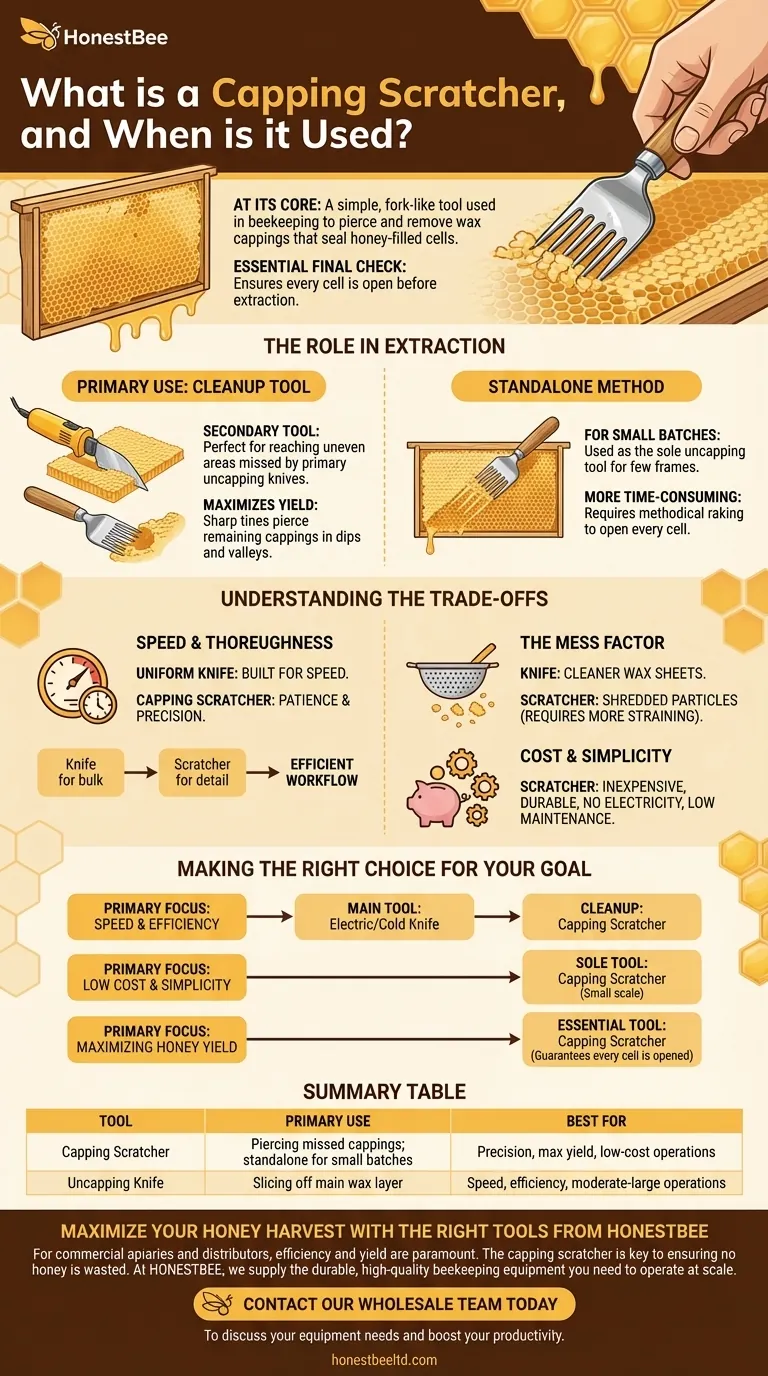
Related Products
- Professional Honey Scraper for Efficient Apiary Maintenance
- Professional Stainless Steel Double-Sided Honey Uncapping Knife
- Stainless Steel Dual Blade Uncapping Plane
- Adjustable Stainless Steel Honey Uncapping Fork with Scraper for Beekeeping
- Professional Honey Uncapping Roller for Efficient Harvesting
People Also Ask
- Why do you uncap honey? Unlock Your Harvest with Efficient Uncapping
- How can a hive tool be cleaned? Master Quick Field Cleaning vs. Deep Sterilization
- What are some safety precautions and care tips for hive tools? Ensure Beekeeping Efficiency and Hive Health
- What is the purpose of a capping scratcher in the uncapping process? Maximize Your Honey Harvest
- What is uncapping honey? Unlock the Key Step to Efficient Honey Harvesting
